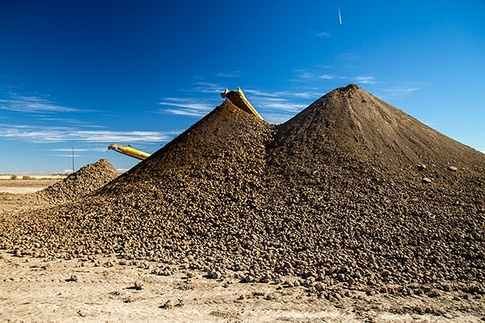The Internet of Food
One of the 21st century’s major social problems is feeding a population that’s projected to grow to 9.6 billion mouths to feed by 2050. By most estimates, this will require doubling the current production level of food. Under steady-state conditions that means twice as much farmland, labor, water, fertilizer, and pesticides. Because increased population also demands more land and not all land is suitable for farming, this is a problem for food production.
Growing More Food
The Malthusian projections (and later ones by the environmental movement such as Paul Ehrlich’s Population Bomb) of mass starvation due to population growth didn’t come to pass because farming got more efficient with the advent of better seed, mechanization, and improved agricultural chemicals. All of that continues, of course. Genetic engineering techniques such as traditional GMOs and new gene editing technologies such as CRISPR/Cas9 enable seed producers – often operating at a small scale – to create new varieties of plants and animals that are more nutritious, faster growing, and more resistant to pests, drought, and frost.
One way to increase food production without expanding the agricultural footprint is through vertical farming, where food is grown indoors in racks powered by LEDs and fed by electronic dosing systems that give each plant the water and nutrients it needs. By some measures of efficiency, vertical farming outperforms farming in fields: the plants need less water, pesticides, and nutrients than they would outdoors. But they also require much more power and an enormous increase in capital investment.
OpenAG
The Media Lab at MIT has a project underway called OpenAG that might get some of these costs under control; IEEE Spectrum suggests OpenAG opens the door to a new era of open-source, Internet-assisted farming that amounts to a new Green Revolution.
One element of OpenAG is super-efficient blue LED lighting, and the other parts are enabled by sensor networks that monitor the growth of individual plants. The sensor data allows the plants to be dosed efficiently and can even alter the nutritional profile of the plants. The MIT researchers run constant experiments though Personal Food Computers that allow them to optimize all the variables in food production so that the yield does what they want when they want it; you can build your own if you want.
If you want a little inspiration, check out this Wired video.
Moving it Outdoors
As cool as this may seem, I’m skeptical about the cost of moving from outdoor growing to indoor growing. While vertical farming is yields high output for its footprint, producing a mountain of potatoes like this one is going to take a lot of racks in a lot of labs.
The power requirement is also staggering, but I suppose the old farmland would be converted to solar farms to generate power for new vertical farms in the cities. But it seems to be the case that vertical farming today is mainly about producing gourmet food items such as fancy lettuce and tomatoes for discerning urban diners. There’s nothing wrong with that, but it won’t feed the world.
is also staggering, but I suppose the old farmland would be converted to solar farms to generate power for new vertical farms in the cities. But it seems to be the case that vertical farming today is mainly about producing gourmet food items such as fancy lettuce and tomatoes for discerning urban diners. There’s nothing wrong with that, but it won’t feed the world.
But that’s alright because this is a technology that’s in its infancy. The increased application of electronics and communication technologies to food production will certainly create the next Green Revolution, we just don’t know how, when and where.
The why is perfectly clear, however: increasing population in an uncertain climate creates the demand for more efficient production, and the tools come from the information technology industry and from genomics. It’s going to be fun to see how this unfolds.



